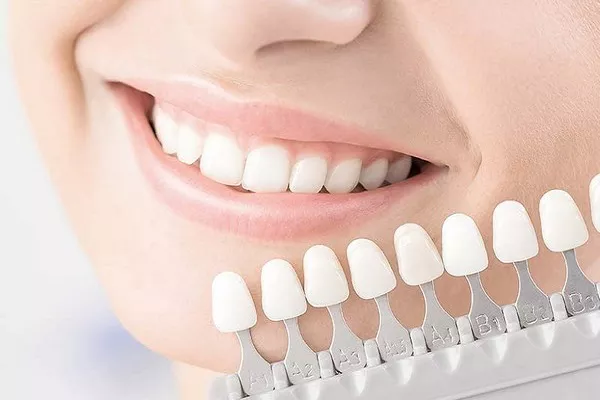Dental fillings are a common restorative procedure used to treat tooth decay and restore damaged teeth to their natural form and function. Many patients wonder how many dental fillings can be done in a single visit, as time constraints and budget considerations often come into play. This article aims to address this question while highlighting the importance of safety, efficacy, and patient satisfaction in dental restoration procedures. As a Google SEO operation expert, we will explore various aspects of dental fillings, including their types, factors influencing the number of fillings done at once, the dental professional’s role, and patient expectations.
Understanding Dental Fillings
Dental fillings are materials used to repair cavities or tooth damage caused by decay, trauma, or wear. The primary objective of a dental filling is to restore the tooth’s structure and prevent further decay. Common materials used for fillings include amalgam, composite resin, porcelain, and gold. Each material has its advantages and considerations, and the choice of filling material depends on factors such as the location and extent of the cavity, patient preferences, and the dentist’s recommendation.
Types of Dental Fillings
a) Amalgam Fillings
Amalgam fillings, also known as silver fillings, have been in use for over a century. They are durable, cost-effective, and suitable for use in load-bearing teeth, such as molars. However, their dark color can make them less aesthetically appealing, which has led to a decrease in their popularity in recent years.
b) Composite Resin Fillings
Composite resin fillings are tooth-colored fillings that blend seamlessly with the natural tooth structure, making them ideal for visible areas. They bond directly to the tooth, requiring less removal of healthy tooth structure, but they are not as durable as amalgam fillings, especially for large restorations.
c) Porcelain Fillings (Inlays/Onlays)
Porcelain fillings, also known as inlays or onlays, are custom-made restorations fabricated in a dental laboratory. They offer excellent aesthetics and durability, making them suitable for larger cavities that need more strength than composite resin fillings can provide.
d) Gold Fillings
Gold fillings, while not as commonly used today, offer exceptional durability and biocompatibility. They are suitable for posterior teeth and patients with a history of teeth grinding.
Factors Influencing the Number of Dental Fillings Done at Once
The number of dental fillings that can be done in a single visit depends on several factors, including:
a) Extent of Decay or Damage
The severity and number of cavities or damaged teeth are crucial factors. A patient with multiple small cavities may be able to have more fillings done at once compared to someone with larger, more complex restorations.
b) Time Constraints
Time availability for both the patient and the dental professional plays a role. Complex restorations may require more time, leading to the need for multiple appointments. Conversely, straightforward cases might allow for more fillings to be done in one session.
c) Patient Comfort and Tolerance
Some patients may have higher pain tolerance and can endure longer appointments, while others may prefer shorter sessions. The dentist should consider the patient’s comfort when determining the number of fillings to be performed at once.
d) Local Anesthetic Considerations
The administration of local anesthesia can limit the number of fillings done in one sitting, as excessive numbing can lead to complications or discomfort for the patient.
e) Overall Oral Health
The general oral health of the patient plays a role in the treatment plan. If there are other dental issues that need to be addressed, the dentist may prioritize certain treatments over others.
The Dental Professional’s Role in Determining the Number of Fillings
A skilled and experienced dental professional plays a crucial role in determining the appropriate number of dental fillings to be done at once. The dentist will conduct a comprehensive examination, including dental X-rays, to assess the extent of decay or damage. Based on the findings, the dentist will develop a treatment plan that addresses the patient’s immediate needs while considering long-term oral health goals.
The dentist will also consider the patient’s preferences and budget constraints when planning the restorative treatments. Open communication between the patient and the dental professional is essential to ensure that the patient’s expectations align with the proposed treatment plan.
Patient Expectations and Informed Consent
Patient education is vital in managing expectations regarding dental fillings. Patients should understand the rationale behind the recommended treatment plan, including the number of fillings to be done at once. Dentists must provide clear explanations of the procedures, potential risks, benefits, and expected outcomes. This ensures that patients give informed consent before proceeding with the dental restorations.
Conclusion
The number of dental fillings that can be done at once depends on various factors, including the extent of decay or damage, time constraints, patient comfort, local anesthetic considerations, and overall oral health. A skilled dental professional will assess these factors and create a treatment plan that optimizes the patient’s oral health while addressing their preferences and needs.
Patients are encouraged to prioritize regular dental check-ups to catch and treat dental issues early, reducing the need for extensive restorations. By maintaining good oral hygiene and seeking timely dental care, individuals can preserve their natural teeth and avoid more complex and time-consuming procedures.
In summary, dental fillings are an essential part of maintaining oral health, and the number of fillings done at once is a personalized decision between the patient and the dental professional. Patients should feel empowered to discuss their concerns and preferences with their dentist, allowing for a collaborative approach to achieving optimal oral health and a confident smile.
Related Topics:































